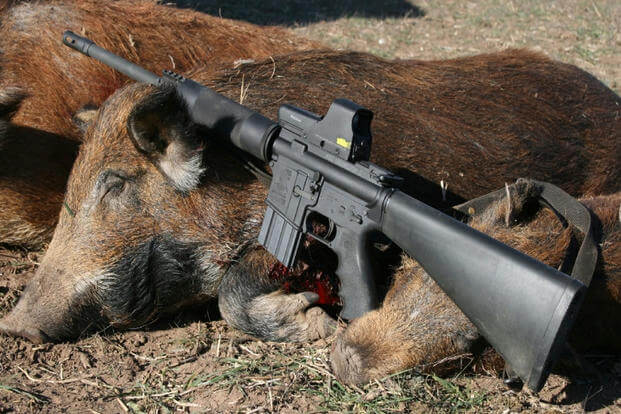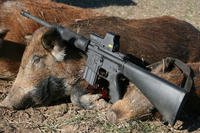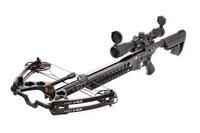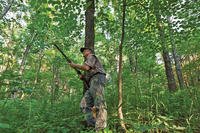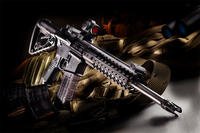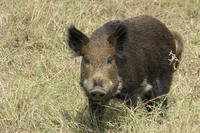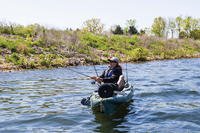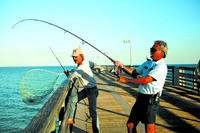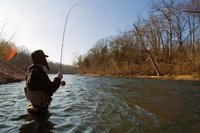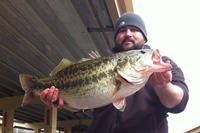Generally, hunters don't take well to change. This is especially true for the older heads in camp. They're set firmly in their comfort zones, which took years in the making, and they can get hostile if you try to force them out. It doesn't matter if the issue is changing traditional hunt season dates, bag limits, deer harvest restrictions, moving stands that have been in place for 20 years and long patterned by the resident deer, or introducing any kind of new technologies whatsoever - they've got no use for trail cameras.
Many still hunt in red plaid and leather work boots using a lever action rifle handed down from their granddad through their father, which of course is fine - tradition is a big part of the hunt. It took a long time for some hunters to accept riflescopes as the norm. At first, magnum rifles were rejected out-of-hand because the old .30-30 or the venerable .30-06 had always "got'er done." Heaven forbid the use of cell phones between hunters while on stand, and pity the novice who needs a GPS to find his way back to camp. However, slowly but surely, these technological advances are finding their places in treestands, shooting houses, on waist belts, and ATVs. Change is certain - slow for some - but inevitable.
Visual Shock to Eye Candy
If that technology is tough to accept, imagine this actual scenario that took place on opening day last season. A hunt club member showed up in camp toting an AR. The dead giveaway that something different was afoot came at the first sight of the extra-wide, black, angular shaped nylon gun case as it was laid out on his truck's tailgate. The bulging Velcro pockets on its outside didn't help much to slip it discretely into camp either. The club hunters circled around for a closer look.
These hunters had never seen anything like that before. Looking at the case, one guy thought it must be one of those new short stroke mini-bows. Those thoughts ended when the case was unzipped, and the somewhat timid hunter reached in to draw out the AR. Eyes popped wide open, jaws dropped, and one could hear the gasps for air. Naw, it wasn't that bad - it was worse.
The first words spoken were "What the hell is that?" Jim Harper of Vicksburg, Mississippi, child prodigy of the long-standing hunting club added, "Heck boy, you don't need no machine gun to hunt at this club."
Everyone laughed - to release the tension I guess. "I mean, surely that thing isn't an automatic, but it sure isn't a walnut-stocked bolt action either," Harper quipped.
Harper went on to tell me that hunter took one bunch of ribbing that hunting season about the odd-looking rifle. Most hunters in camp were a tad skeptical that such a rifle could perform on varmints, much less deer. But then Harper remembered the same thing happened years ago when a member bought in one of those new in-line muzzleloading rifles with a scope mounted on it. "It took our club hunters a while to get used to that technology, too," Harper recalled.
Indeed, it took a while for the new and unusual to wear off, but the hunter approached it the right way. He checked the rifle to be empty and safe then passed it around to allow every club member to handle it. He won their confidence by conveying that he knew safe gun handling procedures and that he obviously would not hunt with a rifle that wasn't capable of getting the job done. This opened the door to further education on the firearm's effectiveness and its appropriate uses for hunting.
Back to School
The key to success in bringing the first AR into hunting camp is to launch a targeted education program. ARs have been around a long time, but many still aren't familiar with them. All they know is that it looks like an "Army" rifle. They have no idea about the suitability or adaptability of the AR to hunting. Most of the old guard have never seen one, much less fired one. Above all else, sell the positive attributes of the AR rifle. These include target accuracy and a flexible platform that allows for different optical sight configurations to adapt to a whole host of hunting conditions with quick-change capabilities.
Make it clear that they are not all .223, and that AR rifles are chambered in a number of effective big game hunting cartridges including the 6.8 SPC, .30 Remington AR, .450 Bushmaster, the .500 Beowolf, and the .308 or .338 Federal. Explain how ARs are user-friendly, easy to maintain, highly "accessorizable" and extremely fun to shoot. Truth is they are downright addictive. That's the message you need to convey. Letting members inspect the AR firearm is the right place to start. Then, let them pick it up, shoulder it, and look downrange through the conventional scope. These common sense steps will go a long way toward introducing a radically different rifle format like the AR platform, and having it eventually accepted as just another deer rifle.
Familiarity breeds acceptance and confidence. Give a short orientation on how the gun functions, how the bolt cycles to chamber a cartridge, how the safety works, as well as the magazine release and other features. Point out the limited five-round magazine that may be mandated by state hunting regulations. Explain that the function of this semi-auto action is much like the familiar Browning BAR or the Remington 742. Lay out some ammo for them to see and handle. Brief them on the bullet type, weight, shooting range and ballistics. Put it side by side with a few common cartridges other hunting-camp members are used to so they get the visual impact. Discuss your choice of caliber chambering and the suitability of that choice for potentially hunting a wide variety of game, but be sure you don't stretch that capability either. Note other common cartridges of about the same power range for comparison. Take questions and pay attention to the members who seem to want to learn and understand but also those who might continue to reject the idea during the season. Sometimes education is a slow process of letting the information soak in.
Field Training Exercises
Getting hunters to view this new platform as an acceptable hunting rifle can sometimes be a sales job. After the orientation, ramp it up by inviting any interested members to a live-fire demo at the shooting range or sight-in area. Make a few AR converts, and they will close the deal for you with the other members who may still be balking at the idea of a new-fangled rifle in their hunting club. Peer pressure works wonders. Set up some targets both paper and dramatic like water-filled milk jugs or a steel gong. Have as much ammunition on hand as you can afford to burn up. It will be worth it. Provide eye and ear protection for the shooters on the firing line, or make sure to tell them to bring their own. After a short loading instruction and safety review, load a five-round magazine and show the members how well the rifle groups. Then let them try it out. You'll get many takers and most will ask for seconds as if they were in a buffet line.
The Proof is in the Pudding Nothing sells a new rifle like successful results from the field. Of course success is more about the hunter's skills than the rifle used. Even so, if you come back into camp with a couple coyotes or bobcats across the fender of your ATV, then that speaks volumes about the appropriate power and accuracy capabilities of your AR rifle. If your AR is chambered in a cartridge suitable for deer hunting, bringing a nice buck or doe back to the skinning rack will certainly lower a number of high eyebrows and cut short many a negative comment.
Bottom line: while many might not immediately cotton to the AR, some will jump on the bandwagon right away. Case in point is young Jason Pope of Madison, Mississippi, when asked about his reaction if an AR rifle showed up in his camp. "I'd think it was pretty neat and would ask if I could try it out. It doesn't matter to me what folks use so long as it gets the job done," Pope replied.
Therein lies the difference between Generation-X and those much older Baby Boomers. To sell the AR rifle, remember to orient, demonstrate, and educate. Soon enough, more ARs will show up in camp.
